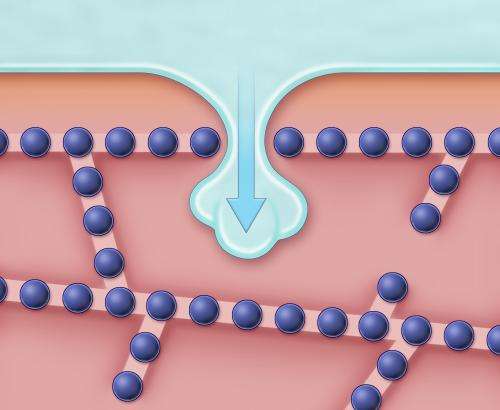New findings could overcome major stumbling blocks to tissue cryopreservation for medical care

Developing an efficient way to freeze and store living tissues could transform many aspects of medical care and research, but ice crystallization often occurs within cells during such cryopreservation procedures, leading to cell death. In the November 5 issue of the Biophysical Journal, a Cell Press publication, researchers report that they have gained new information about the processes that are responsible for promoting the freezing of cells within tissues. This knowledge may ultimately lead to novel approaches for preventing tissue injury during cryopreservation.
A long-standing obstacle to avoiding tissue damage during freezing is that when cells are joined together within tissues, individual cells are more likely to crystallize than if the cells are kept apart. "In tissues, ice crystals are thought to be able to grow through membrane channels called gap junctions, thus allowing ice to easily propagate from cell to cell," explains senior author Dr. Jens Karlsson, of the Department of Mechanical Engineering at Villanova University. "But the results of the present study indicate that the mechanism of tissue cryo-injury is much more complex than was previously thought."
Dr. Karlsson and his team monitored microscopic freezing events inside genetically modified cells and used mathematical models to show that gap junctions do not always provide the major pathway for the spreading of ice crystals between cells. They saw that cell-to-cell propagation of ice also occurred during freezing of tissue samples in which gap junction formation had been suppressed. The authors discovered that intercellular connections—in which neighboring cell membranes are stitched together by rows of rivet-like structures known as tight junctions—also play a significant role.
"By using high-speed video imaging, we found evidence that ice from outside the cells sometimes forms nanoscale branches, which can penetrate the barriers created by tight junction seams," says Dr. Karlsson. "The resulting invasion of the spaces between cells appears to promote crystallization of the cells adjacent to the breach."
The unexpected findings may provide a boon for the manufacturing of engineered tissue products that can be used for grafts and organ transplantations. "Using cryopreservation to stop living tissue constructs from spoiling during storage will be the key to enabling economical mass production, quality assurance, and shipping logistics for these life-saving products," says Dr. Karlsson.
More information: Biophysical Journal, Higgins et al.: "Effects of Intercellular Junction Protein Expression on Intracellular Ice" dx.doi.org/10.1016/j.bpj.2013.09.028
Journal information: Biophysical Journal
Provided by Cell Press

















